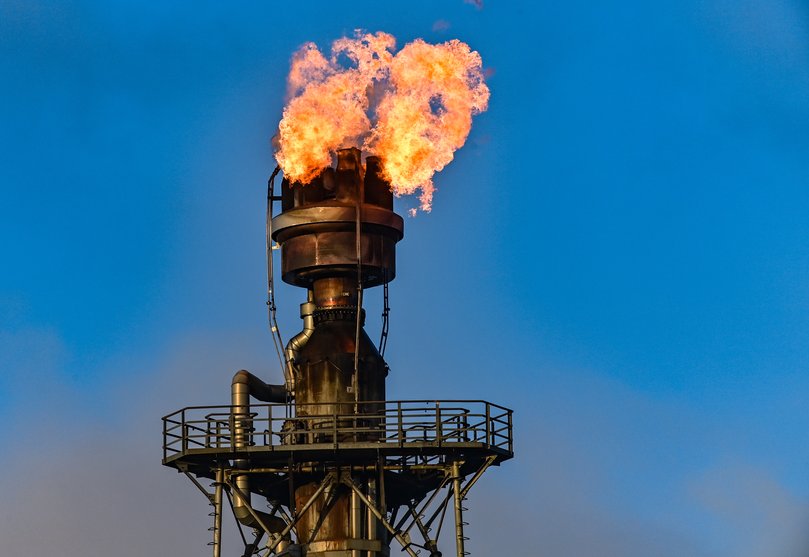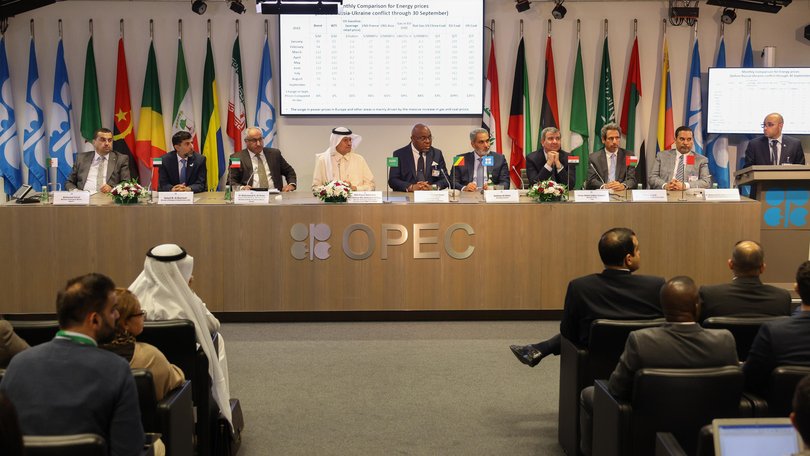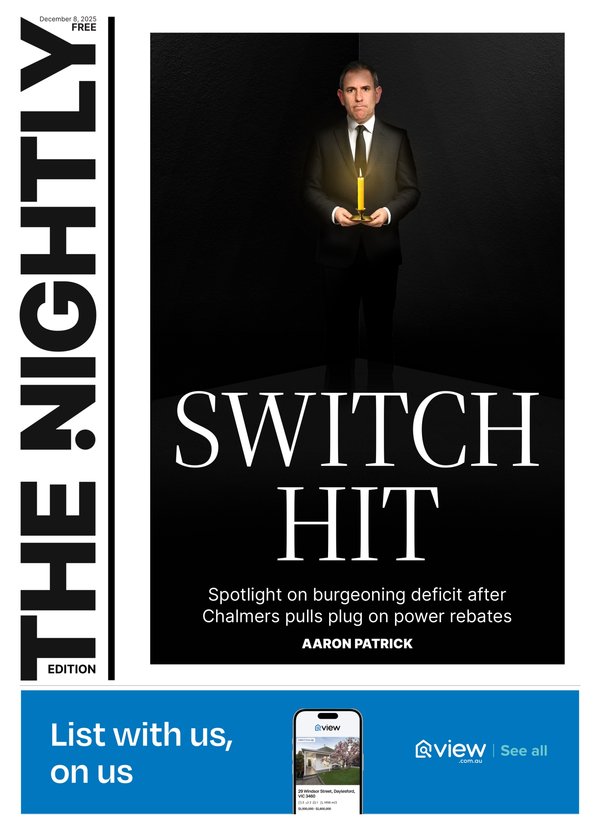THE ECONOMIST: Oil cartel under pump as UAE flouts rules and producers flood market. Is it the end of OPEC?

On May 31, the Organisation of the Petroleum Exporting Countries and its allies (OPEC+) said that it would pump 411,000 more barrels per day (b/d) of crude in July.
The statement marked the third such rise in as many months. OPEC+’s increased production is equivalent to 1.2 per cent of global demand, and represents a drastic acceleration from plans drawn up last year, when the group said that it would raise output by 122,000 b/d a month.
Big moves, though not big enough to sink oil prices. You might, therefore, think that OPEC+ is in total control. After all, the cartel, which supplies half the world’s oil, exists to keep prices high. In reality, however, it faces a crisis that could mark the beginning of its end.
Sign up to The Nightly's newsletters.
Get the first look at the digital newspaper, curated daily stories and breaking headlines delivered to your inbox.
By continuing you agree to our Terms and Privacy Policy.In its 65 years of existence OPEC has navigated many crises, from Gulf wars and America’s shale boom to a pandemic-era oil bust.
But today is different. Knowing that oil demand could peak in the coming decade, members want to liquidate reserves.
That, together with the spending required for petrostates to diversify their economies away from oil, means some are flouting the cartel’s cardinal rule: to not supply more than is agreed upon.
Although Saudi Arabia, the group’s enforcer, is trying to slap them into obedience, one serial cheater is getting a free pass: the United Arab Emirates, OPEC’s third-largest exporter, and its biggest menace.
To understand OPEC’s predicament, look at the justifications for the cartel’s latest increases in output. The one broadcast by the group — that “healthy fundamentals” mean the world needs more oil — does not pass the sniff test.

Analysts, OPEC’s included, have revised down their demand forecasts to account for the damage of Donald Trump’s trade wars. Non-OPEC countries, meanwhile, keep pumping more. The world is swimming in oil.
There are more credible explanations for the move. One is that Gulf states are trying to please Mr Trump, who wants cheap petrol in America’s forecourts. Another is that the group wants to recover lost market share. A third frames it as an effort by Saudi Arabia to punish members who are flouting their quotas.
It is possible that, at the margin, the second 411,000 b/d hike — announced days before Mr Trump started touring the Gulf — helped Saudi Arabia and the UAE obtain goodies from Uncle Sam, such as artificial-intelligence chips. But “Saudi Arabia does not want to set too much of a precedent,” says a former OPEC executive.
Clawing back market share will also prove hard. Oil demand is expected to jump by 1m b/d from May to August in OPEC countries alone, as extra-hot weather means greater need for air-conditioning, which will help absorb the output hikes so far.
Should the group opt to pump still more, however, prices could drop below $US50 ($77), at which point members may revolt. And OPEC+ remains far from recovering its market power.
By June its target output will still be 5m b/d or so lower than in August 2022, when it began to announce cuts.
What of enforcing discipline? Iraq, last year’s biggest overproducer, appears to have trimmed output a little despite not having control over all its production, some of which is in Kurdish territory
Kazakhstan, which overshot by 300,000 b/d in April, is more troublesome. Its production is dominated by international firms over which the state holds little sway.
Yet the trickiest pupil of all is the UAE. The country tells OPEC it produces 2.9m b/d, bang on its quota.
The cartel’s own assessment, which averages estimates from “secondary sources” (eight consultancies) has not deviated from 2.9m b/d since at least 2023.
Computing an exact, independent figure is impossible, since the UAE stopped releasing detailed data years ago.
All the same, OPEC’s figures look impossibly low: tanker-tracking suggests the country’s crude exports alone add up to 2.8m b/d, and that is before accounting for any local refining or additions to stocks. (The country’s energy ministry did not respond to our requests for comment.)

In private, analysts admit their numbers are massaged. Several — including one at a secondary-source firm — say they produce one estimate for internal purposes and another for external consumption. Two reckon that the UAE overproduces by 200,000 to 300,000 b/d.
The International Energy Agency, an official forecaster that OPEC ditched as a secondary source in 2022, estimates the UAE’s output at nearly 3.3m b/d in April. Some foreign producers with outposts in the UAE suggest all these estimates are too low.
One Gulf-based analyst who supplies data to national and international oil firms goes as high as 3.4m b/d.
Almost everyone upholds the fiction in public. After a reshuffle in February, when OPEC dropped America’s Energy Information Administration as a source, all of its external assessors are now commercial outfits.
Foreign consultancies count the cartel and its oil giants, such as Saudi Aramco and Abu Dhabi’s Adnoc, as clients. Journalists fear being cut off.
Why does Saudi Arabia, which has a testy relationship with the UAE, allow this? At oily get-togethers its leaders are now frostier to the Emiratis, notes one confidant to Gulf leaders. But they cannot get too angry.
Among OPEC+ members, the UAE has long had the most idle capacity as a share of its total production capacity, which generates huge frustration in Abu Dhabi.
When global oil demand rebounded post-covid, a clash over quotas twice led the UAE to consider leaving OPEC, which could have been a fatal blow for the cartel. As a consequence, Saudi leaders now fear it might really walk if criticised again.
Things will probably get still more fraught. The UAE cares less about low oil prices than Saudi Arabia. An economist at an Emirati bank says that the country needs them at just $US50 a barrel to balance its books, whereas its bigger neighbour, which is spending lavishly on real-estate projects, requires them at $US90 a barrel.

In the five years to 2027 the UAE is slated to invest $US62b in new production, bringing its capacity to 5m b/d, up from 3.6m b/d in 2021; Adnoc, which pumps most of the territory’s oil, says that capacity has already almost hit the target for two years’ time.
The UAE’s quota has not kept up with this growth. Last year it negotiated a 300,000 b/d increase, to be phased in over 18 months. On May 28 OPEC+ scheduled a more comprehensive revision of quotas — originally due this year — for 2027.
The Emiratis are unlikely to accept their straitjacket.
One analyst with contacts in both governments says it is only a matter of time before Saudi Arabia and the UAE openly clash. A descent into disorder, fuelled by conflict between OPEC’s largest and third-largest exporters, could then make the cartel unworkable.
